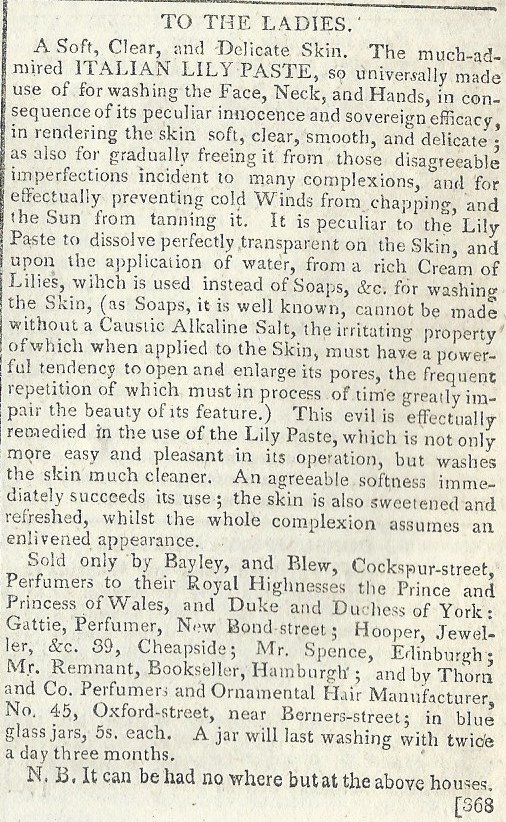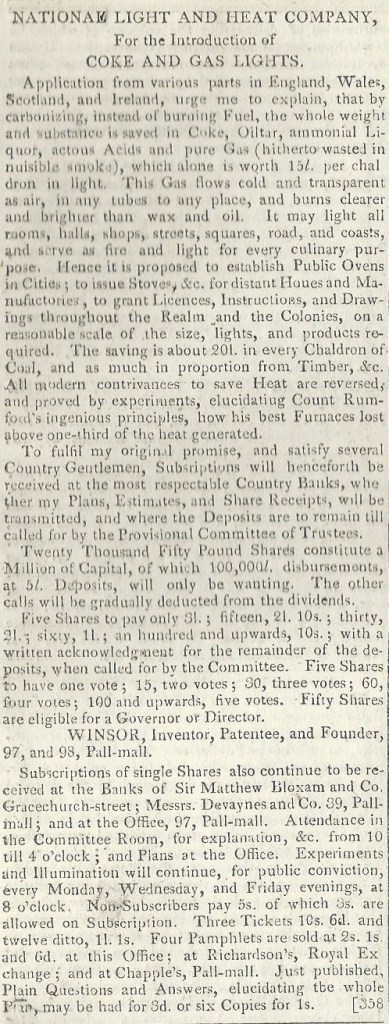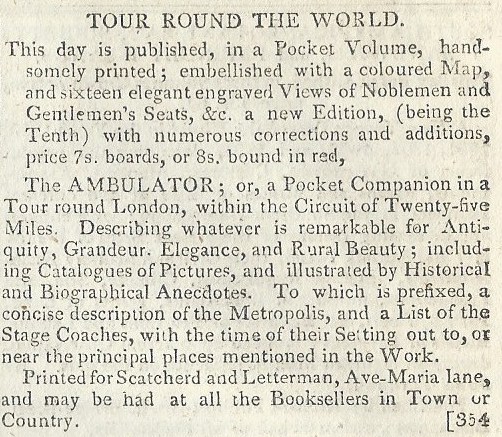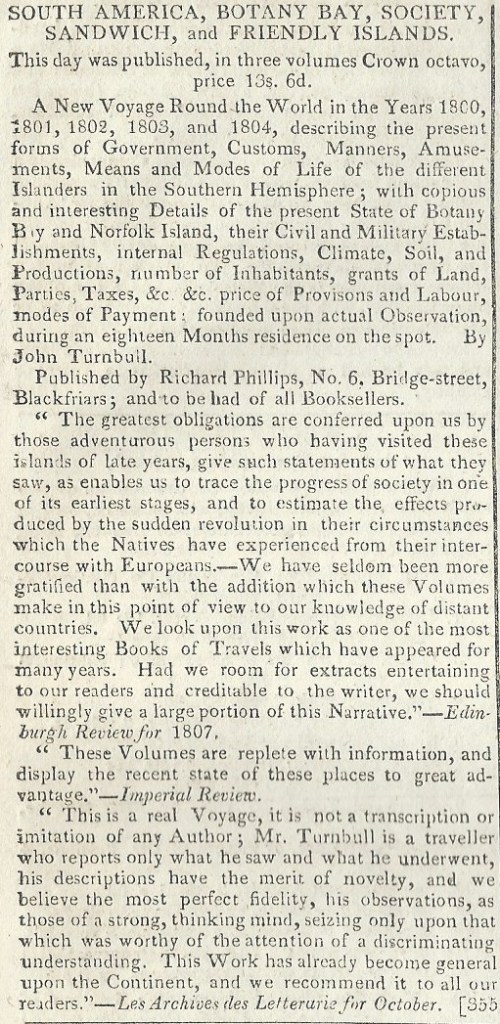published by Rudolph Ackermann in 3 volumes, 1808–1811.
The print annexed is a spirited representation of that interesting scene, a public auction. The various effect which the lot (a Venus) has on the company, is delineated with great ability and humour. The auctioneer, animated with his subject, seems to be rapidly pouring forth such a torrent of eloquence as cannot fail to operate on the feelings of his auditors; indeed, having two of their senses enlisted in his favour, there seems to be little doubt that he will succeed. The eloquence of the rostrum is of a peculiar nature, Foote, who delineated every object that he chose with an astonishing truth and felicity, has, in his Minor, drawn an auctioneer with so much whim and drollery, and which, if a little outré, possesses so many striking characteristics, that it may serve for a portrait of the whole. Our animated auctioneer, adorning his Venus with all the flowers of rhetoric, seems to be saying, with Smirke in the Minor, “A-going for five and forty, — no body more than five and forty? — Pray, ladies and gentlemen, look at this piece! — quite flesh and blood, and only wants a touch from the torch of Prometheus, to start from the canvass and fall a-bidding!” And these flowers are not scattered in vain; (‘for,” continues Smirke, “a general plaudit ensued, — I bowed, and in three minutes knocked it down at sixty-three — ten”
The tout-ensemble of this print is marked with propriety and interest. The great variety of character, the masses of light and shade judiciously opposed to each other, the truth of the perspective, and the felicity of touch which the artist has adopted to give the idea of old pictures in the back ground, hwe the happiest effect imaginable.
That in the rage for purchasing old pictures the craft of experienced dealers should frequently impose upon those who might think it necessary to appear to have, what nature had denied them, taste and judgment, is not to be wondered at. All living genius was discouraged, or only found patrons in these dealers if they would condescend to manufacture for them Raphaels and Claudes, Corregios and Salvator Rosas. That they could not always get a sufficient supply of copies from Italy, the following extract from a valuable work may give some idea: — “Among the papers of a lately deceased virtuoso, I met with a few manuscript sheets, entitled ‘Hints for a History of the Arts in Great Britain, from the Accession of the Third George.’ The following extract proves, that painting pictures called after the ancient masters, was not confined to Italy: we had in England some industrious and laborious painters, who, like the unfortunate Chatterton, gave the honours of their best performances
To others. To the narrative there is no date, but some allusions to a late sovereign determine it to be a short time before we discovered that there were, in the works of our own poets, subjects as well worthy of the pencil as any to be found in the idle tales of antiquity, or the still more idle legends of Popery.
“The late edict of the emperor for selling the pictures of which he has despoiled the convents, will be a very fortunate circumstance for many of the artists in this country, whose sole employment is painting of old pictures; and this will be a glorious opportunity for introducing the modern antiques into the cabinets of the curious.
“A most indefatigable dealer, apprehensive that there might be a difficulty and enormous expence in procuring from abroad a sufficient quantity to gratify the eagerness of the English connoisseurs, has taken the more economical method of having a number painted here. The bill of one of his workmen, which came into my hands by an accident, I think worth preservation, and I have taken a copy for the information of future ages. Every picture is at present most sacredly preserved from the public eye, but in the course of a few months they will be smoked into antiquity, and roasted into old age, and may probably be announced in manner and form following:
‘To the Lovers of Virtu.
‘Mr. — has the heartfelt pleasure of congratulating the lovers of the fine arts upon such an opportunity of enriching their collections, as no period, from the days of the divine Apelles to the present irradiated era, ever produced; nor is it probable that there ever will be in any future age so splendid, superb, brilliant, and matchless ail assemblage of unrivalled pictures, as he begs leave to announce to the connoisseurs, are now exhibiting at his great room in; being the principal part of that magnificent bouquet, which has been accumulating for so many ages, been preserved with religious care, and contemplated with pious awe, while they had an holy refuge in the peaceful gloom of the convents of Germany. By the edict of the emperor, they are banished from their consecrated walls, and are now emerged from their obscurity with undiminished lustre! with all their native charms mellowed by the tender softening- pencil of time, and introduced to this emporium of taste! this favourite seat of the arts! this exhibition-room of the universe! and need only to be seen to produce the most pleasing and delightful sensations.
‘When it is added, that they were selected by that most judicious and quick-sighted collector. Monsieur D, it will be unnecessary to say more; his penetrating eye and unerring judgment, his boundless liberality and unremitting industry, have insured him the protection of a generous public, ever ready to patronise exertions made solely for their gratification.
‘N. B. Descriptive catalogues, with the names of the immortal artists, may be had as above.’
“THE BILL.
‘Monsieur Varnish, To Benjamin Bistre, Dr.
‘To painting the Woman caught in Adultery, on a green ground, by Hans Holbein £3 3 0
‘To Solomon’s wise Judgment, on pannel, by Michael Angelo . 2 12 6
‘To painting and canvass for a naked Mary Magdalen, in the undoubted style of Paul Veronese 2 2 0
‘To brimstone for smoking ditto 0 2 6
‘Paid Mrs. W for a live model to sit for Diana bathing, by Tintoretto 0 16 8
‘Paid for the hire of a layman, to copy the Robes of a Cardinal, for a Vandyke 0 5 0
‘Portrait of a Nun doing Penance, by Albert 0 2 2
‘Paid the female figure for sitting thirty minutes in a wet sheet, that I might give the dry manner of Vandyke* 0 10 6
‘The Tribute Money rendered with all the exactness of Quintin Mestius, the famed blacksmith of Antwerp 2 12 6
‘To Ruth at the Feet of Boaz, on an oak board, by Titian 3 3 0
‘St. Anthony preaching to the Fishes, by Salvator Rosa 3 10 0
‘The Martyrdom of St. Winifred, with a view of Holy well Bath, by Old Frank 1 11 6
‘To a large allegorical Altar-piece, consisting of Men and Angels, Florses and River-gods; ’tis thought most happily hit off for a Rubens 5 5 0
‘To Susannah bathing; the two Elders in the back ground, by Castiglione 2 2 0
‘To the Devil and St. Dunstan, high finished, by Teniers 2 2 0
‘To the Queen of Sheba falling down before Solomon, by Murillio 2 12 6
‘To Judith in the Tent of Holofernes, by Le Brun 1 16 0
‘To a Sisera in the Tent of Jael, its companion, by the same 1 16 0
‘Paid for admission into the House of Peers, to take a sketch of a great character, for a picture of Moses breaking the Tables of the Law, in the darkest manner of Rembrandt, not yet finished 0 2 6
It is to be hoped, that a general knowledge and taste for the arts are now so far diffused among us, that the nobility and gentry are awake to living merit, and can properly appreciate those powers by which the old masters have acquired their high reputation. They are no longer to be imposed on by the stale tricks of those jugglers in picture-craft, who made large fortunes by their ill-reposed confidence. A few recent examples will suffice to prove the increased taste and judgment of the public.
In March 1795, the very fine collection of pictures by the ancient masters, the property of Sir Joshua Reynolds, was sold by auction for 10,319/. 2s. 6d .; and in April 1796, various historical and fancy pieces of his own painting, together with some unclaimed portraits, were sold for 4505/. 18s. His very valuable collection of drawings and prints is not yet disposed of.
In April 1806, thirty-two choice Flemish pictures were sold by auction, and produced 6733 guineas. One of them, by Paul Potter, was knocked down at 1450 guineas; though this, it is said, was bought in.
But it is only for works of the very first-rate excellence, which, in the present state of pictorial knowledge, the nobility and gentry will be liberal; and many speculators in second and third-rate pictures have been miserably disappointed, notwithstanding the pompous and high-sounding names with which they crowded their catalogues. In the year 1802, Count Hagen consigned to England a collection of pictures, the catalogue of which announced a most select assemblage of the very first masters; and the prices they were valued at raised the expectation of cognoscent to the highest pitch: their number was about sixty, and their value he estimated at 20,000/. After many consultations whether they should be exhibited and sold by private contract, or public auction, the latter were as determined on; and that Mr. Christie, instead of two days’ view, should allow a week for their exhibition. This being settled, the sale came on, and the produce did not nearly cover the expences: it is true, that four of the best were bought in and sent back to Dresden; but the proprietor had a deficit to pay upon the others amounting to 183/. 16s. besides the freight, &c. for the return of the four unsold: so that he paid for selling his pictures, and gave them into the bargain.
About the same time a Mr. Lemmer arrived with another cargo from Vienna. This was a smaller collection, amounting to about thirty: it was generally supposed that they belonged to Count Harrach. This collection, however, met with no better success: for, after a long private exhibition, a public sale was resorted to; and the result was, that Mr. Lemmer let his rubbish go for whatever it would fetch, and bought in all the pictures that were tolerable. This mad speculation, considering the great distance, the travelling of three people in a carriage built on purpose, and drawn by six horses, and a residence of above eight months in London, could not have cost the noble speculator less than 12 or 1500/.
The fate of the Truschessian gallery is still a stronger proof of the absurd notions which foreigners entertain of the knowledge and judgment of English collectors. The count brought over a collection consisting of above one thousand pictures: and that among them were several chefs d’oeuvres, cannot be denied; but he asserted that the whole were unique, and of themselves sufficient to form a splendid national gallery; and, by his estimation, at a fourth part of their real value, they were worth 60,000/. But as Messrs. Fries, bankers at Vienna, had advanced 27,000/. to the count, and taken this collection as a security, after many unsuccessful endeavours to dispose of it, the mortgager determined to sell by public auction those not sold by private sale. These pictures were publicly exhibited for about two years: of course their merits and demerits would be fully ascertained. The net produce of the public and private sale did not amount to more than 18,000/.: and here it must be observed, that the mortgagees bought in more than twenty of the best, which they accounted for to the proprietor at the sums the auctioneer knocked them down at, and which are included in the 18,000/.
By the statute 19th Geo. III. c. 56. s. 3. it is provided, that no person shall exercise the trade or business of an auctioneer, or seller by commission, at any sale of estate, goods, or effects whatsoever, whereby the highest bidder is deemed the purchaser, without taking out a licence; which, if it is in the bills of mortality, shall be granted by the commissioners of excise, and elsewhere by the collectors, supervisors, & c.; for which licence to sell by auction in any part of England or Wales, shall be paid the sum of twenty shillings, and elsewhere five shillings; and the said licence shall be renewed annually, ten days at least before the expiration of the former; and if any person shall act without such licence, he shall forfeit 100/. if it is within the bills, and elsewhere 50/.
All kinds of property sold by auction, except cloth wove in this kingdom, and sold in the piece as taken from the loom, and in lots of 20/. or upwards, pays a duty of seven-pence in the pound; and the auctioneer shall give a bond on receiving his licence, with two sureties in 5000/. that he will, within fourteen days after every such sale, deliver an account thereof at the next excise-office, and will not sell any goods contrary to the directions of this act, 27th Geo. III. c. 13. &c.
*Some of the ancient masters acquired a dry manner of painting from studying after wet drapery. WEBB on painting.









